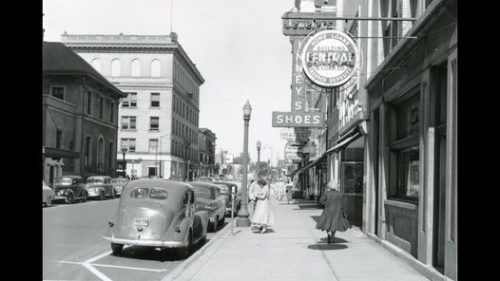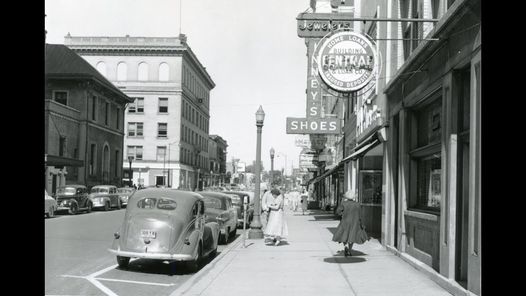I just found this guy on Facebook and he’s so right. His message is “The only way to combat the effects of apathy is in fostering a sense civic pride.” Look at his comments here about the town of many of our childhoods’.
Maybe just 50 years ago (he says 80) you could expect your typical town of 30,000 to have a hardware store, a men’s store, a women’s store, a children’s clothing store, a shoe store, an appliance store, an electronics store, a book store, a record store, an arts and crafts store, an auto parts store, a lawn and garden store, a toy store, a pet store, a home furnishings store, a cooking store, a sporting goods store, an office supply store, a convenience store and a grocery store just to name a few, and they would all be locally owned.
Today, these are just a partial list of the departments in every single Walmart and Target.

Twenty separate, free-standing, locally owned, independent businesses. Each of them a source of pride and income for a local family. Each of them another source of employment and likely a good community partner. These businesses were the tenants of the downtown, they occupied the buildings and paid the rent that afforded the needed maintenance. The residential areas built around the downtown had walkable access to all these businesses and friends and neighbors would run into one another when patronizing them.
The proximity of these businesses to all the houses made life pretty easy. Kids didn’t need bussed to school or shuttled to soccer practice. Parents could walk to work and to social engagements. Getting groceries only required a short stroll and the same for a visit to the hardware store. All of these businesses were right next to one another and they were situated in the heart of the community, surrounded by housing. They brought people together and generated wealth for local families. Turns out, it was, and remains the best model.
Downtowns, as they were meant to function, didn’t require seas of parking, because living in these cities didn’t require car ownership. This is how cities, towns, villages, and hamlets have functioned since the advent of civilization and how they operate in much of the world still today. The notion of a dense and walkability community is viewed by some as a Scandinavian socialist takeover plot. A very cute, convenient, local wealth-generating, quality-of-life boosting, takeover.
Using one’s own feet to move around isn’t exactly progressive. Living in proximity to other people isn’t all that modern. Our grandparents enjoyed good urbanism. Their
parents were the beneficiaries of density. These ideas go back quite a ways and they remain good ideas. We certainly haven’t improved upon them. Technology will never
provide us with a better solution than walking.
